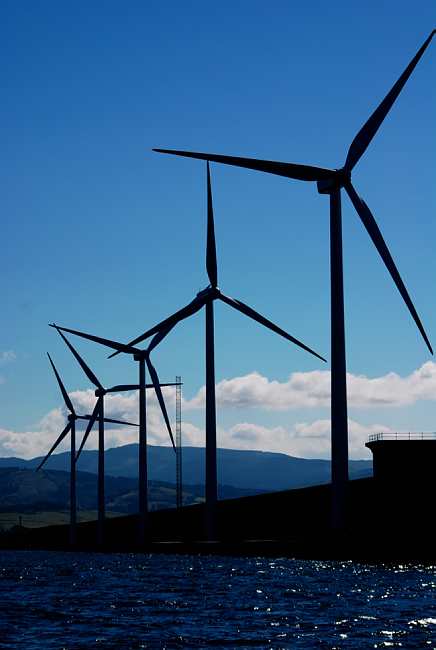Offshore Wind Report: Key Findings
 Here are some of the key findings from Oceana’s offshore wind report:
Here are some of the key findings from Oceana’s offshore wind report:
- A small fraction of U.S. renewable energy resources is enough to power the country several times over. This could be done in a cost-effective way that minimizes carbon dioxide emissions which drive climate change and threaten our oceans.
- Offshore wind could easily supply almost half the current electricity generation on the East Coast.
- Delaware, Massachusetts and North Carolina could generate enough electricity from offshore wind to equal current electricity generation, entirely eliminating the need for fossil fuel based electric generation.
- New Jersey, Virginia and South Carolina could supply 92%, 83% and 64% of their current electricity generation with offshore wind, respectively. In all these states, wind could provide more energy than the states currently get from fossil fuels.
- Offshore wind power offers more environmental benefits and fewer impacts than traditional fossil fuels.
- Offshore wind power is located near population centers where electricity demand is highest. Coastal states account for more than three-quarters of U.S. electricity consumption.
- Offshore wind power is less expensive than many alternatives. In some cases, offshore wind could actually lower electric bills while continuing to provide a growing amount of energy in the long term.
- Offshore wind creates more jobs than offshore drilling. Long-term jobs would be created to support offshore wind development for skilled workers and scientists, including electricians, meteorologists, welders, and turbine operators just to name a few.
- Offshore wind technology can help build the U.S. economy. While the U.S. has not yet installed any offshore wind farms, Europe has been doing so for 20 years and has become the leading supplier of offshore wind turbines. Building our own domestic manufacturing base would strengthen our economy, allow U.S. expenditures to remain here at home, and allow the U.S. to become an offshore wind technology exporter.
- Offshore wind projects should be designed to minimize environmental impacts by using new techniques and technology in the construction, operation and decommissioning process, and by protecting the environment in the siting process.
- Choosing wind instead of oil and gas, rather than taking an “all-of-the-above” approach, will increase efficiency and lower costs for power production overall.
Offshore Wind vs. Offshore Oil Potential
- On the Atlantic Coast, conservative estimates suggest that offshore wind could generate about 30 percent more electricity than could be generated by the technically available offshore oil and gas.
- On the Atlantic Coast alone, the United States could install at least 127 gigawatts of wind power, an amount roughly equivalent to European projections for that continent by 2030.
- Developing 127 gigawatts offshore wind energy capacity over 20 years would provide energy at a cost of about $36 billion less than the production of economically recoverable new offshore oil and natural gas on the Atlantic coast.
- Offshore wind development off the Atlantic coast could create between 133,000 and 212,000 jobs annually in the United States –more than three times more jobs than new offshore oil and natural gas development is expected to create.
- If the Atlantic Coast’s offshore wind energy potential was used exclusively for home heating, it could generate enough electricity to heat more homes than exist in that region. In fact, the Atlantic Coast’s offshore wind potential is so great, that it could supply enough electricity to heat every home in the country, and then some.
- If the Atlantic coast’s offshore wind was used exclusively to generate power, it could power nearly twice as many electric vehicles as could new offshore oil and gas from the same area. In fact, the Atlantic Coast’s offshore wind energy potential is so great that it could power more cars than even exist in the region. More than 112.5 million electric cars could be powered by wind. For comparison, that is about half the number of cars and trucks on the road in the entire country.
- In the South Atlantic, offshore wind could heat more homes than offshore oil and natural gas resources combined, for less than half of the price. Electricity from offshore wind could displace an amount equivalent to the electricity generated by 100% of the oil and nearly 75% of the natural gas in the South Atlantic states.
- In the Mid-Atlantic, offshore wind could provide the same amount of electricity as is currently generated by all fossil fuels used in that region. Wind from offshore could heat nearly ten times more homes, produce three times more power, or power four times more cars as the new offshore oil and gas resources combined.
- In the North-Atlantic, offshore wind could provide more electricity than is currently generated by oil and natural gas in that region. The wind from offshore could heat nearly four times more homes as offshore oil and gas resources combined. Offshore wind energy in the North Atlantic could power more cars or generate more electricity than new offshore oil and gas resources combined.
Download Key Findings Factsheet



